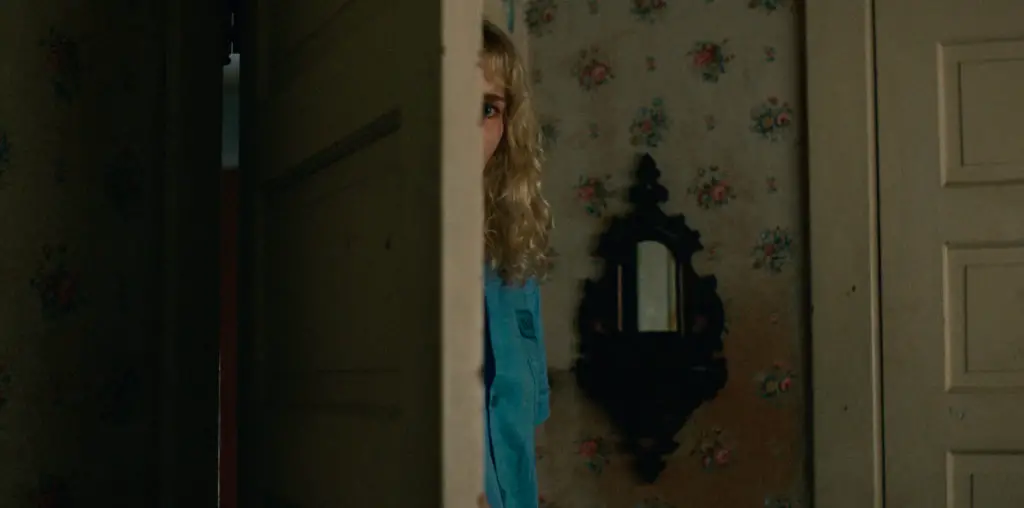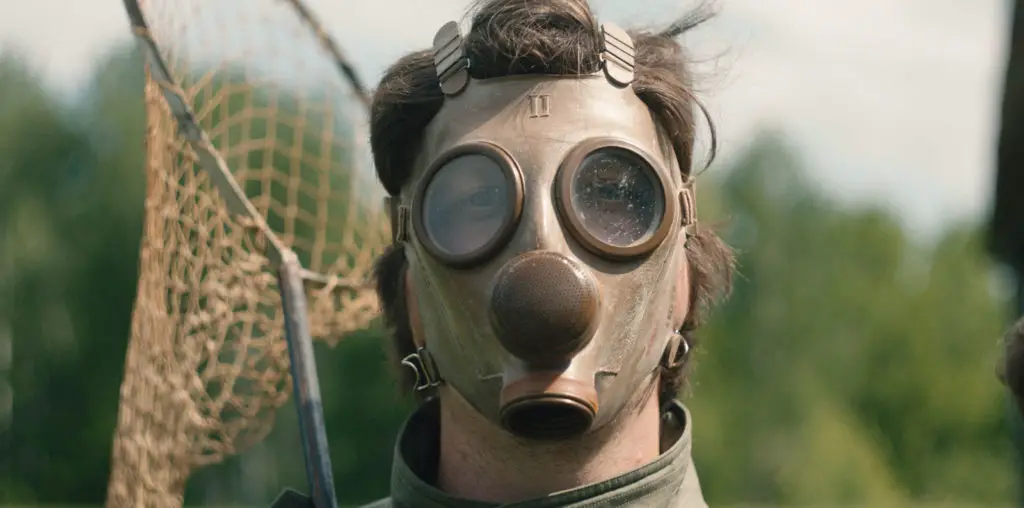
No matter the venue, whether it’s Mann’s Chinese Theater filled to capacity or the ghostly emptiness of the Edwards Valencia 12 in Valencia, California, “The Blues Brothers” is not a film to miss on the big screen, regardless of August 29, a Monday night, generally being a time to collapse after the opening of another work week.
On that night, Mann’s geared up to celebrate the 25th anniversary of “The Blues Brothers”, with a Q&A featuring an eclectic panel and an audience furnished with Blues Brothers fedoras, sunglasses, and ties. Imagine watching that while sitting in one of the other 79 theaters across the country chosen for this event. While the Mann’s audience was peppered with such people as Charles Napier and editor George Folsey, Jr., the theater in Valencia gave way to the usual crowd; a few ignorant 20-somethings (for all the culture they spoke of behind me, including attending a Shakespeare festival, you’d think they would have at least read up on digital projection), men and women who looked ready to jump on whatever goes wrong at the screening, the dedicated few who didn’t care what night it was (they were there for the wonderful, glorious, joyous energy), and the newest trendsetters: Ones whose feet were planted right on top of the barrier between the upper section and the lower section. Somehow, these people are always at the movie theater.
Those ready-made complainers had good reason to do so early on. As the Q&A began via satellite feed, music from the film kept playing even as the panel guests were speaking. John Landis, James Brown, Steve Cropper, Henry Gibson, Thom Mount (former executive V.P. at Universal), and Dan Aykroyd in Toronto were on hand to share stories of the experience of making this slice of cinematic joy. But what of the risk of missing whatever they had to say because someone hadn’t figured out which cord plug went in the right slot? At least six people tromped out into the lobby of that abandoned ghost town of a theater (abandoned from my point of view at least, not having briefly walked into the screenings that were already in progress), seeking someone to at least fix the problem and true that whoever was up there or had hooked up the equipment before had not learned it properly. First time for digital equipment there, I’d wager. Meanwhile, all around were out loud thoughts of free tickets, something they should give us for our troubles in this not being done correctly.
As it always goes, however, there was no problem when everything was fixed and the stories began for us. The host of the evening, Gordon Meyer, was tethered to a scripted format for at least half an hour. Even as he asked the questions typical of a screening like this, such as how the mall sequence was staged, the camaraderie among the panel was exactly as if they had decided to stage their own rendition of “The Blues Brothers” right then and there for all 80 theaters to see. Pulling forth all this history, James Brown speaking of Reverend Cleophus James, Steve “The Colonel” Cropper reminiscing about Dan Aykroyd’s driving antics, and Henry Gibson talking about having to quell a rising crowd of extras by announcing that he wasn’t a real Nazi, there was a genuine appreciation for all that went into this movie. Where many documentaries on DVDs tout speeches from various cast and crew members on how great it was to work on a film, the love for this movie and for who worked on it feels genuine. They were working on something so zany, so wild, and so much fun, and they didn’t mind it even as the budget soared, concerning then-Universal Pictures president Ned Tannen, who told Landis that he liked the dailies, but then reamed out president of production, Thom Mount, after Landis left. However, the most touching story came from Dan Aykroyd and it was naturally about John Belushi, and how he was most certainly “America’s Guest”.
They had been filming in Harvey, Illinois and it was past lunch at 2 a.m., and Belushi couldn’t be found anywhere. An abandoned tract of land revealed a trail and Aykroyd followed it, leading to a house with its lights on, the only one in that area that visible. Aykroyd knocked on the door and when it was answered, he told the man that he was part of a production company filming and one of their actors were missing. The man immediately said that Belushi had walked in, dug into the fridge, ate what was in it, and crashed on the couch, sound asleep. It wasn’t only this man’s house that Belushi had invaded.
After the Q&A, it was time for the Trained Monkey Act. This is where anticipation turns into disappointment over and over again. The credits rolled on the Q&A and a National Cinemedia-branded yellow screen said that there would be a brief intermission before the “BigScreen Presentation of the Blues Brothers 25th Anniversary Edition DVD”. Considering that this was a satellite feed and theaters all across the country were to have the film shown at the very same time, the same trouble was likely at the other locations. Every minute or so, the screen would disappear, leaving behind darkness and anticipation would build, but the yellow screen returned, triggering groans and once in a while, a shout from someone in the upper rows wanting the movie to start already. It’s fine when it’s the first two times, but try living through it until the screening actually began at 7:31 p.m. Even I knew that when this whole event started at 6:30 p.m. or a little bit later than that, the movie would be shown at 7:30. Thick skulls with little brains are hard to drill through, so why worry? It’s difficult. Even Pavlov’s dogs had brains which told them when to salivate. The signal went through and triggered the appropriate action. When the bell didn’t ring, they didn’t drool. You’d think these people would have gotten the message. Such is the frustration of the dying movie theater experience, which was swiftly forgotten once “The Blues Brothers” began.
Indeed, any movie theater turns into a house of worship when “The Blues Brothers” is around. Different reactions envelope different folks and there were all the right moves. Sister Mary Stigmata (Kathleen Freeman) of course got a good number of laughs, but it’s the energy wrapped within acts by Reverend Cleophus James (James Brown) and Mrs. Murphy (Aretha Franklin), such as Belushi slowly shaking, gradually feeling the light of needing to bring the band back together, and Franklin letting those vocal cords rise upward. We’re now in a time in the multiplex where movies don’t even merit these types of reactions. There might be applause from an audience after a movie either out of pure enjoyment or for some reason unknown to us, but the passion in that auditorium is something sadly missing today. Teens go to the movies as a social activity. Others who go there generally are brain-dead during a movie, allowing images to pass by them but never affect them. A laugh or two may be had here and there followed once in a while by a slow clap by someone laughing the hardest, but when today have you known the applause to be as loud as it was, even at 20% capacity, when Franklin finished her number. John Landis’ outrageousness in the car chases also merited laughs that any rotted comedy would dare hope for. Suddenly, the slow thinkers in the audience had turned into an excited crowd. This is what we were here for. The music, the songs, the characters (Wow! It’s Paul Reubens! And over there it’s….John Candy!), the humor, everything that will keep this musical classic great was there. Belushi is desperately missed since much mainstream comedy released during the year is a low-grade garbage barge that even seagulls wouldn’t bother flying over.
As the end credits began, some of the crowd I had been so displeased with started filing out. After they ended, I saw who was left. The dedicated ones. Perhaps it was their first time, an opportunity for them to see a classic on a bigger screen. Or maybe they had seen it lots of times, and with their kids in tow, it was a time for a proper introduction to younger generations. That “R” rating means nothing. This movie has so much soul and that’s why it will last. Looking at those few left, they may be part of those crowds that make up the workdays, but they certainly weren’t while sitting there, enjoying everything that had happened. There was hope in the movie theaters after all. If only we had more of them and banished the rest of the uncouth Neanderthals who take up seats galore and treat the theater as their own wider home. Considering that they’re the ones who bring the most profit to the studios, it’s an idealistic thought to be sure, but for all that time in the evening, those two hours and thirteen minutes, their incorrigible ways disappeared. Suddenly, we were in Chicago. I know I was there. The right movie doesn’t require an IMAX screen to enfold you.
Even for those times when I craved the quick elimination of movie theater offenders, a most unusual event occurred. True that it may have been due to the theater being less than half full, but nevertheless, it doesn’t happen often. I had even joked to a friend of mine that if I heard one cell phone ring, that person would have a hard time walking with the phone jammed all the way up their butt. Not one phone rang, and I know why. Any other movie screening would include twittering cell phones. “The Blues Brothers” is just that revered to prevent that interruption. If you went to a screening somewhere across the country and a cell phone did go off, either it was that lamebrain’s first time seeing this movie or they had been dragged along. Those who love it know where their priorities are. Even without being at the actual Mann’s event, it was home sweet home on the big screen. Back to Chicago. Back with Jake and Elwood. Back to deep, sweet, sweet pleasure.

